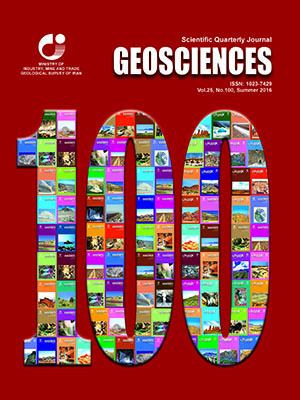Document Type : Original Research Paper
Authors
Department of Geology, University of Zanjan, Zanjan, Iran
Abstract
Aliabad Mousavi- Khanchy Cu occurrence is located in the Tarom area, 30 km east of Zanjan. Rock units exposed in this area consist of Eocene volcanic and volcano-sedimentary units (equal to Karaj Formation) which are intruded by Oligocene quartz-monzonitic plutons. In this area, Cu mineralization occurs as Cu-bearing quartz veins and veinlets within the intermediate tuffs and andesitic lavas. Based on microscopic studies, ore minerals are include chalcopyrite with minor pyrite and oligist, and quartz and chlorite are present as gangue minerals at the Aliabad Mousavi- Khanchy Cu occurrence. The ore minerals show disseminated, vein and veinlets, breccia, open space filling and replacement textures. Alteration is restricted to the silicified and chloritic altered parts of the ore zones. Two stages of hypogene and supergene mineralization can be distinguished at the Aliabad Mousavi- Khanchy Cu occurrence. The hypogene stage of mineralization is progressed from disseminated crystals of pyrite and chalcopyrite within the tuffs and lavas (substage 1) to quartz- chalcopyrite- pyrite‒cemented veins and breccias (substage 2), individual or sets of quartz veins and veinlets (substage 3) and finally quartz- oligist veins and veinlets (substage 4). Malachite, azurite and Fe-hydroxides with veins and veinlets and open space filling textures are formed during supergene stage. REE pattern of the host rocks and the mineralized samples indicate that mineralized samples are enriched in REE. This signature may indicates high concentration of REE in ore-forming fluids and/or high W/R interaction at Aliabad Mousavi- Khanchy area. Enrichment of ore-forming elements (Cu, Pb, Zn) in ore zones is also specifies leaching of elements from altered host rocks to ore zones by ore-forming fluids. Characteristics of Aliabad Mousavi- Khanchy Cu occurrence are comparable with vein type of Cu deposits.
Keywords

